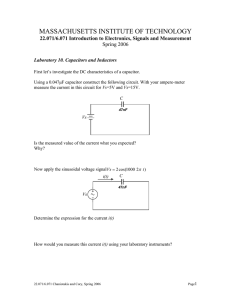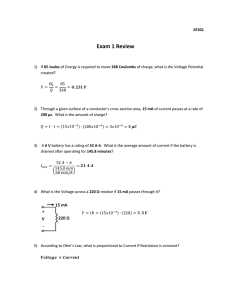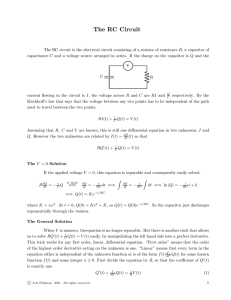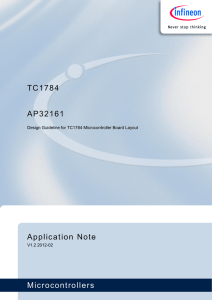MASSACHUSETTS INSTITUTE OF TECHNOLOGY 22.071/6.071 Introduction to Electronics, Signals and Measurement
advertisement
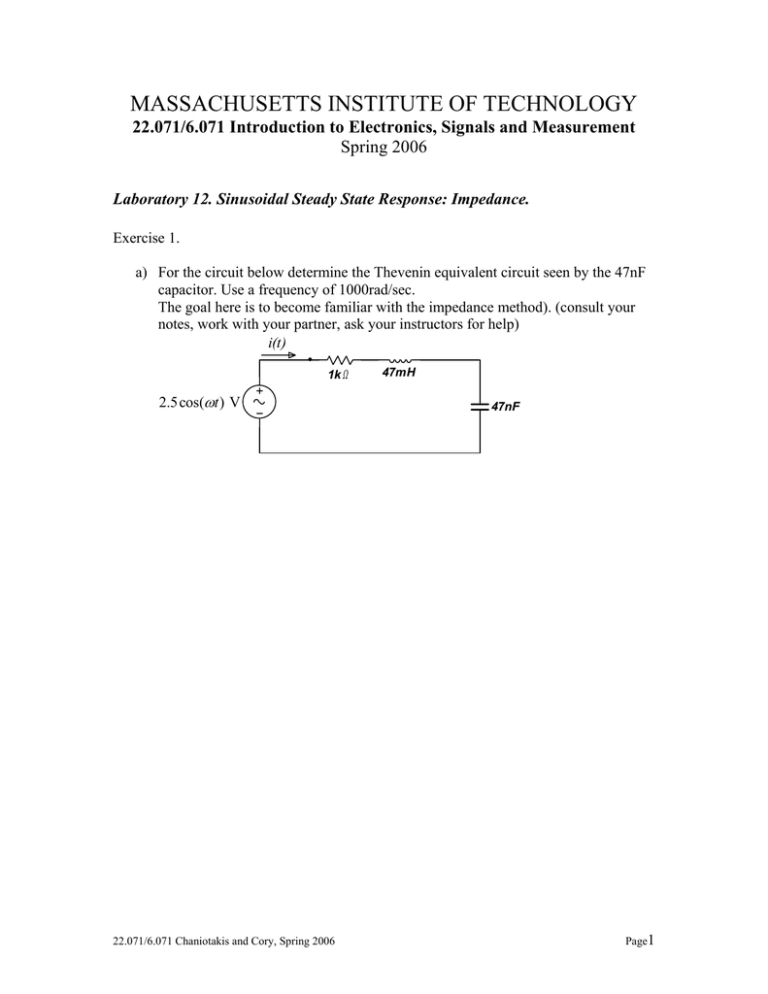
MASSACHUSETTS INSTITUTE OF TECHNOLOGY 22.071/6.071 Introduction to Electronics, Signals and Measurement Spring 2006 Laboratory 12. Sinusoidal Steady State Response: Impedance. Exercise 1. a) For the circuit below determine the Thevenin equivalent circuit seen by the 47nF capacitor. Use a frequency of 1000rad/sec. The goal here is to become familiar with the impedance method). (consult your notes, work with your partner, ask your instructors for help) i(t) 1k Ω 2.5cos(ωt ) V 22.071/6.071 Chaniotakis and Cory, Spring 2006 47mH 47nF Page1 b) With the additional 1kΩ resistor added as indicated below determine the Thevenin equivalent circuit seen by the 47nF capacitor. The frequency is again 1000rad/sec. i(t) 1k Ω 2.5cos(ωt ) V 22.071/6.071 Chaniotakis and Cory, Spring 2006 47mH 1k Ω 47nF Page2 Exercise 2. Now we will measure the voltage Vc for various combinations of frequency ω and R i(t) R 2.5cos(ωt ) V 47mH 47nF Vc a) First write the voltage Vc as a function of R, and ω. (use the voltage divider rule) b) Now measure the amplitude of Vc and observe its dependence on ω. Use R=1.5kΩ, vary ω from 1,000rad/sec to 50,000rad/sec. Plot a few values below to show the variation of Vc with ω. Vc ω Do your measurements agree with your results from part (a)? 22.071/6.071 Chaniotakis and Cory, Spring 2006 Page3 c) Set the source frequency at 10000rad/sec and vary the value of R and observe the results. Now plot Vc as a function of R. (a good range of R is from 100Ω to 20kΩ) Vc R d) (The following two parts for extra credit). Apply Kirchhoff’s laws and the voltage current relationships for the elements in the circuit and derive the equation that describes the behavior of this circuit. R L Vs C e) Now with R=100Ω, apply a square wave pulse signal for Vs (2.5 Volt magnitude, 500 Hz) and observe the output at one of the transitions. (You will need to adjust the time axis in order to see this effect) How is this different from the case where only a resistor and a capacitor or a resistor and an inductor comprise the circuit? (A simple observation will do) 22.071/6.071 Chaniotakis and Cory, Spring 2006 Page4

